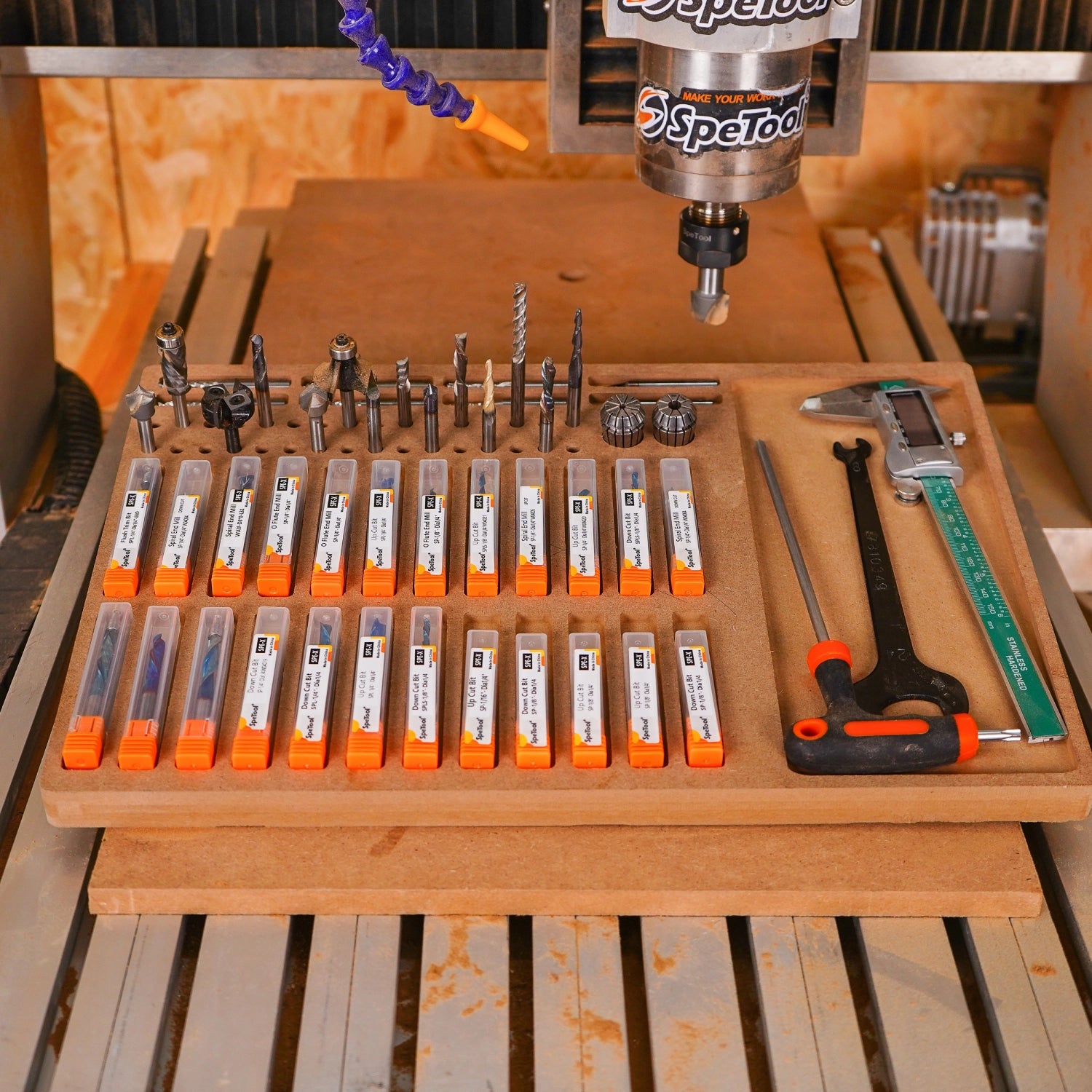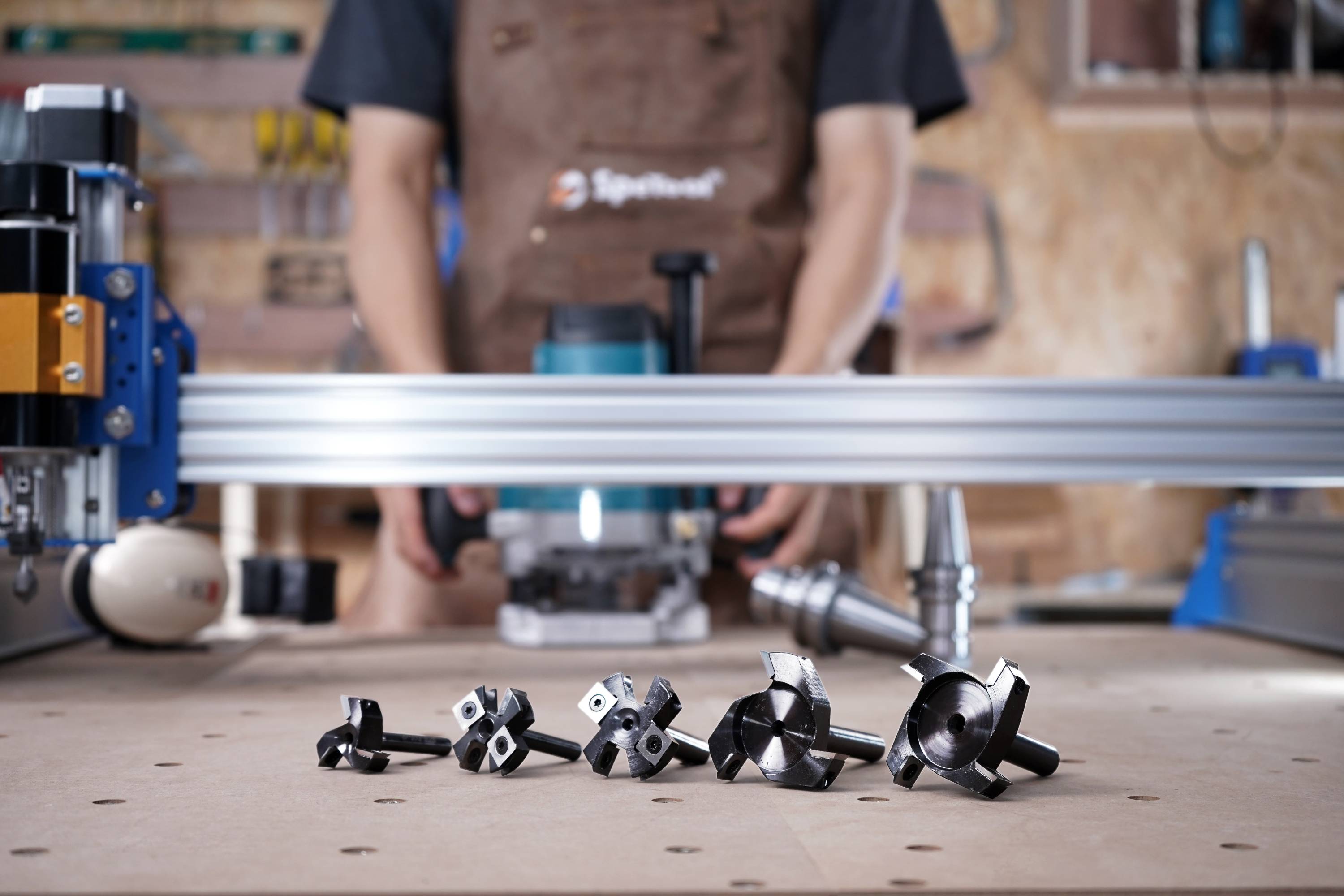How to set router bits' speed and feeds, stepover, pass depth, clearance pass stepover, final pass stepover, plunge rate, and more:
Introduction:
Router bits are an essential tool in any woodworker's toolbox. They come in various shapes and sizes, and each bit is designed for a specific purpose. Using router bits correctly involves setting up the machine to ensure that the bit operates at the right speed and feed rate. In this article, we'll discuss how to set up router bits' speed and feeds, stepover, pass depth, clearance pass stepover, final pass stepover, plunge rate, and other essential parameters.
Setting up Router Bits:
To begin, you should select the right router bit for your project. The bit's diameter and shape will determine the maximum cutting speed and feed rate you should use. Refer to the manufacturer's recommendations for the proper operating speed and feed rate for each bit.
Speed and Feed Rate:
The speed and feed rate are the most critical factors when setting up a router bit. The speed refers to the RPM (revolutions per minute) of the router bit, while the feed rate determines how fast the router bit moves through the material being cut. A higher speed and feed rate will result in a smoother cut, but it can also cause the bit to become dull or break.

The feed rate should be set based on the material being cut, the bit's size and shape, and the desired surface finish. A general rule of thumb is to start with a slower feed rate and gradually increase it until you find the right balance between speed and surface finish. A faster feed rate will produce a smoother surface finish, but it can also cause the bit to overheat and dull more quickly.
Stepover and Pass Depth:
The stepover and pass depth are other important parameters to consider when setting up a router bit. The stepover refers to the distance between each pass made by the router bit. A smaller stepover will result in a smoother surface finish, but it will also take longer to complete the cut.
The pass depth determines how deep the router bit will cut into the material with each pass. A deeper pass depth will result in a faster cut, but it can also cause the bit to become dull more quickly. A shallower pass depth will produce a smoother surface finish, but it will take longer to complete the cut.
Clearance Pass Stepover:
The clearance pass stepover refers to the distance the router bit moves to the side between each pass. This step is necessary to ensure that the router bit doesn't cut into the material on the return pass. The clearance pass stepover should be set based on the router bit's diameter and the material being cut. A general rule of thumb is to set the clearance pass stepover to half the diameter of the router bit.
Final Pass Stepover:
The final pass stepover is the distance the router bit moves to the side on the last pass. This step is crucial to ensure that the final surface finish is smooth and even. The final pass stepover should be set based on the router bit's diameter and the desired surface finish. A general rule of thumb is to set the final pass stepover to 10% of the router bit's diameter.
Plunge Rate:
The plunge rate refers to how quickly the router bit plunges into the material. A slower plunge rate will result in a smoother cut, but it will also take longer to complete the cut. A faster plunge rate will produce a rougher cut, but it will also complete the cut more quickly.
Conclusion:
In conclusion, setting the proper speed and feeds, stepover, pass depth, clearance pass stepover, final pass stepover, plunge rate, and other factors is critical to achieving the desired finish quality and prolonging the life of your router bits. It is important to refer to the manufacturer's recommendations and adjust these factors as needed based on your specific cutting needs.





